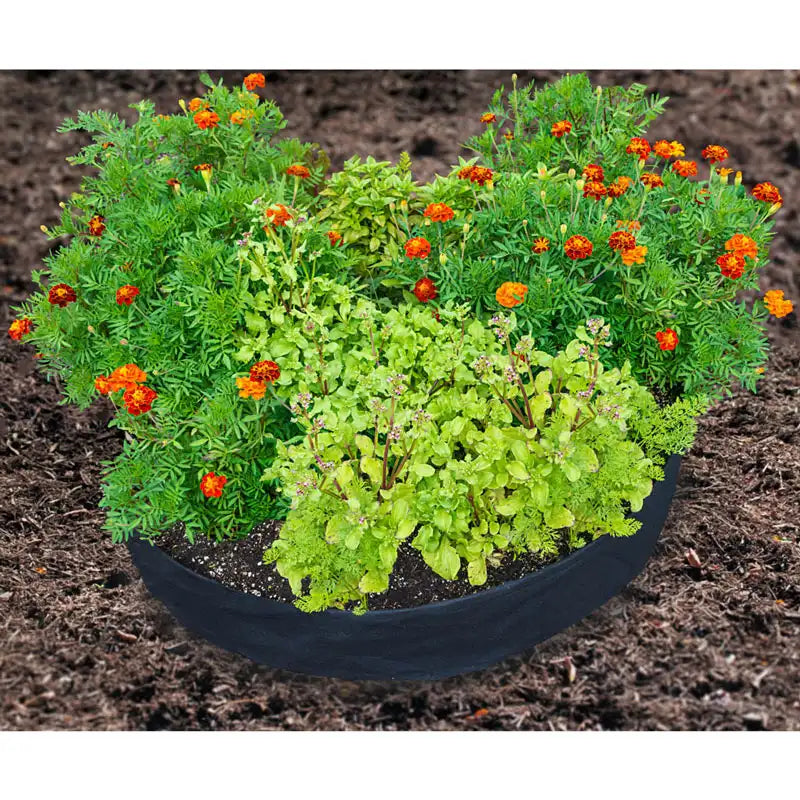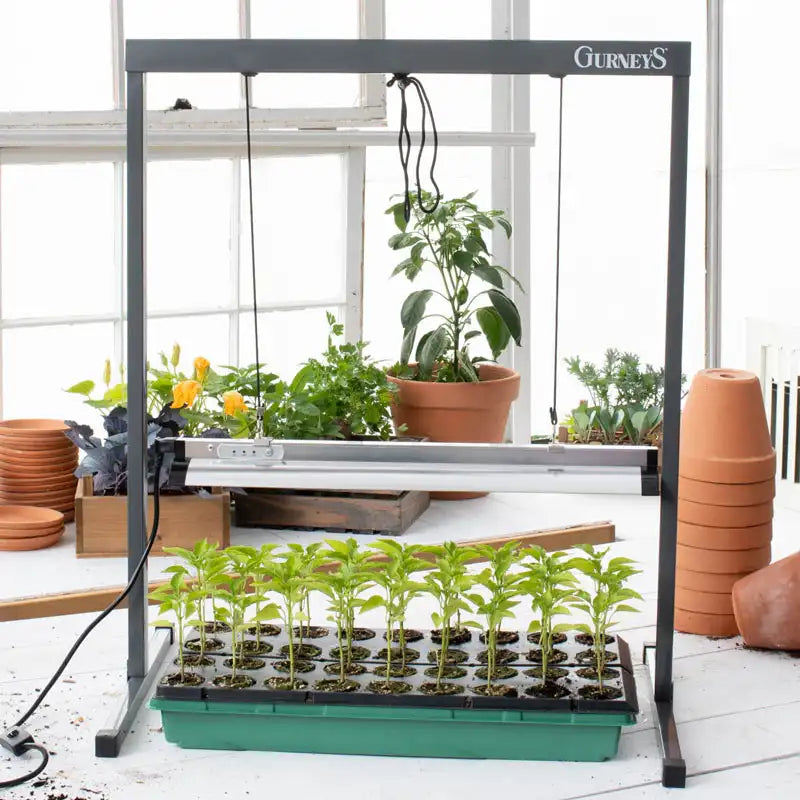Grow Yourself Some Lupins!
Q. Daniel "in the northern suburbs of Chicago" writes: "I have been trying to grow lupins both from seed and purchased plants over the past couple of years with no success. "I have directly sown lupin seed in the soil during December and gotten germination in the spring, but the lupins usually die back during the summer and don't return. Since I am in Northern Illinois, I have pretty dense clay soil, so I have also grown them outdoors in peat pots and tried backfilling the holes with a mix of native soil and perlite for increased drainage. "Is there a better method I could be using to increase my chances of success or significantly improve the drainage of my soil?"
A. As you can imagine, I originally chose Daniel's question just so we could play around with the famous Monty Python sketch, "give me all your lupins!" But as I researched the question, I realized what an amazing and underutilized flower they are.
Members of the pea family (edible peas that is, not the popular flower named 'sweet pea'), lupines are, like peas, legumes—which means that they can absorb plant-feeding nitrogen from the atmosphere. If you managed to grow a good stand of them, you could till them back into the soil at the end of the season as a cover crop to be followed by corn. (Corn is notoriously Nitrogen-hungry and the decomposing lupin plants would feed the growing corn.*) Or you could just use them as a hot source of nitrogen in a compost pile.
*bonus—I bet you'd get a good number of new lupin plants popping up alongside the corn!
But first you have to grow the lupins, and their single biggest requirement is good drainage, which is the opposite of Daniel's 'dense Indiana clay'. Raised beds are the best way to get around this problem, so I emailed him back to see if he was still a 'flat earth' gardener. His reply: "Yes. The area where I've been trying to grow the lupins already contains established perennials and I have been too lazy to try to move everything into a raised bed. (I do have a small raised bed that I use for vegetables in another part of my yard.)"
Well, the clay is the problem here; but I think I can see a way to overcome it that will prove very worthwhile. Most sources recommend planting lupins in the back of perennial beds, as they have the height for it, with the tall flower spikes often growing four feet tall or more—and in pretty much any and every dramatic color you might imagine. If Dan wants lupines for this kind of dramatic backdrop, I suggest essentially digging a ditch in the area he wants these tall beauties to grow (presumably behind the existing perennials) and not reusing any of the clay he'll be removing. Toss it into the woods, throw it at Evil Squirrels or give it to a potter or brick maker.
Make the trench about a foot deep and then slam the tines of a garden fork or pitchfork into the subsoil to bust it up and hopefully create some really good drainage. Then refill the hole with a combination of yard-waste compost (NOT composted manure!), milled peat moss and sharp sand—around one-third each should be ideal. You can add a little bit of hardwood ash to counteract the natural acidity of the peat moss, but not too much as lupins prefer a slightly acidic soil. You could also substitute a 'soil-free mix' (aka potting soil or seed-starting soil) for the peat moss.
Just don't skimp on the width of the trench; and be sure to leave room for airflow in front of the lupins, as crowding them can lead to problems with mildew.
Lupins should take well to this kind of light loose growing medium whenever and however they're planted, but here's how Jill Jesolowski, one of the best of my ORGANIC GARDENING staff back in the 90s, raised a nice stand of the dramatic flowers for a story on growing from seed. First, she followed the advice of a Nebraska professional to always start the seeds indoors, and to give them a little abuse before planting.
Some sources recommend chilling the seeds, but Jill found success by just {quote} "nicking them" with a kitchen knife and then soaking the assaulted seeds in water for 24 hours. The seeds are as big as bean seeds, she explains, so it's pretty easy to do—just don't nick the visible 'eye' at the center of the seed. (This assault is a necessary step as the seeds are reluctant to take up water otherwise.)
Time this act of violence to take place about eight weeks before your first frost, sow the soaked seeds in six packs filled with a light, loose seed-starting mix and keep them in a warm spot indoors. Plant the seeds very close to the surface of the containers, keep the medium moist, and be patient—it'll take a couple weeks to a month for the spouts to emerge. Then keep them under bright light and plant them outside right around your last frost date in Spring.
Some varieties are annuals. Some are herbaceous perennials. All like moist soil and full sun but not scorching summer heat. As individual flowers fade, you can either dead-head them for a longer bloom time or let them set seed. Then you can either collect and save the seed or let it fall to the ground where some of the seed will grow new plants the following year.
The seeds of "species" or open-pollinated lupins will produce the exact same type and color of plant. The seeds of hybrid varieties will produce unpredictable lupins, which could be fun.
A. As you can imagine, I originally chose Daniel's question just so we could play around with the famous Monty Python sketch, "give me all your lupins!" But as I researched the question, I realized what an amazing and underutilized flower they are.
Members of the pea family (edible peas that is, not the popular flower named 'sweet pea'), lupines are, like peas, legumes—which means that they can absorb plant-feeding nitrogen from the atmosphere. If you managed to grow a good stand of them, you could till them back into the soil at the end of the season as a cover crop to be followed by corn. (Corn is notoriously Nitrogen-hungry and the decomposing lupin plants would feed the growing corn.*) Or you could just use them as a hot source of nitrogen in a compost pile.
*bonus—I bet you'd get a good number of new lupin plants popping up alongside the corn!
But first you have to grow the lupins, and their single biggest requirement is good drainage, which is the opposite of Daniel's 'dense Indiana clay'. Raised beds are the best way to get around this problem, so I emailed him back to see if he was still a 'flat earth' gardener. His reply: "Yes. The area where I've been trying to grow the lupins already contains established perennials and I have been too lazy to try to move everything into a raised bed. (I do have a small raised bed that I use for vegetables in another part of my yard.)"
Well, the clay is the problem here; but I think I can see a way to overcome it that will prove very worthwhile. Most sources recommend planting lupins in the back of perennial beds, as they have the height for it, with the tall flower spikes often growing four feet tall or more—and in pretty much any and every dramatic color you might imagine. If Dan wants lupines for this kind of dramatic backdrop, I suggest essentially digging a ditch in the area he wants these tall beauties to grow (presumably behind the existing perennials) and not reusing any of the clay he'll be removing. Toss it into the woods, throw it at Evil Squirrels or give it to a potter or brick maker.
Make the trench about a foot deep and then slam the tines of a garden fork or pitchfork into the subsoil to bust it up and hopefully create some really good drainage. Then refill the hole with a combination of yard-waste compost (NOT composted manure!), milled peat moss and sharp sand—around one-third each should be ideal. You can add a little bit of hardwood ash to counteract the natural acidity of the peat moss, but not too much as lupins prefer a slightly acidic soil. You could also substitute a 'soil-free mix' (aka potting soil or seed-starting soil) for the peat moss.
Just don't skimp on the width of the trench; and be sure to leave room for airflow in front of the lupins, as crowding them can lead to problems with mildew.
Lupins should take well to this kind of light loose growing medium whenever and however they're planted, but here's how Jill Jesolowski, one of the best of my ORGANIC GARDENING staff back in the 90s, raised a nice stand of the dramatic flowers for a story on growing from seed. First, she followed the advice of a Nebraska professional to always start the seeds indoors, and to give them a little abuse before planting.
Some sources recommend chilling the seeds, but Jill found success by just {quote} "nicking them" with a kitchen knife and then soaking the assaulted seeds in water for 24 hours. The seeds are as big as bean seeds, she explains, so it's pretty easy to do—just don't nick the visible 'eye' at the center of the seed. (This assault is a necessary step as the seeds are reluctant to take up water otherwise.)
Time this act of violence to take place about eight weeks before your first frost, sow the soaked seeds in six packs filled with a light, loose seed-starting mix and keep them in a warm spot indoors. Plant the seeds very close to the surface of the containers, keep the medium moist, and be patient—it'll take a couple weeks to a month for the spouts to emerge. Then keep them under bright light and plant them outside right around your last frost date in Spring.
Some varieties are annuals. Some are herbaceous perennials. All like moist soil and full sun but not scorching summer heat. As individual flowers fade, you can either dead-head them for a longer bloom time or let them set seed. Then you can either collect and save the seed or let it fall to the ground where some of the seed will grow new plants the following year.
The seeds of "species" or open-pollinated lupins will produce the exact same type and color of plant. The seeds of hybrid varieties will produce unpredictable lupins, which could be fun.



